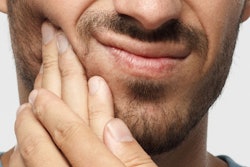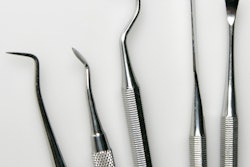
The National Academies of Sciences, Engineering, and Medicine (NASEM) have recommended overhauling temporomandibular disorder (TMD) treatment. An August 13 article published in Oral Surgery, Oral Medicine, Oral Pathology and Oral Radiology highlights the recommendations and steps taken to address them.
In a 2020 report, NASEM called for a shift away from the dental-centric model. The OOOO journal article summarizes the NASEM committee's recommendations and reports on dentistry's efforts to implement the suggestions.
"Traditional dentistry-centered approaches to research and treatment of TMDs must be modernized to align with insights gained from new scientific discoveries," wrote the article authors, led by Dr. Charles Greene of the University of Illinois at Chicago.
The original NASEM report was released in March 2020 as a collaboration between the TMJ Association (TMJA), the U.S. National Institutes of Health (NIH), and a roundtable of patients with temporomandibular joint (TMJ) disorders. It proposed short- and long-term measures to address the opportunities and gaps in TMD-related research, education, training, and treatment, the authors of the OOOO article wrote.
Of those recommendations, the first four prioritized developing a national research consortium and setting priorities for basic, translational, and public health research, as well as bolstering clinical research. In response, the NIH and the National Institute of Dental and Craniofacial Research (NIDCR) established a working group to develop strategies to support better research efforts, and the TMJA has begun seeking additional funds for studies, the authors wrote.
Other NASEM recommendations focused on bettering the quality of care for patients via improved disease risk assessment and stratification, diagnostics, and dissemination of clinical practice guidelines and metrics of care. To meet these recommendations, the U.S. Food and Drug Administration (FDA) coordinated registry network and the TMJ roundtable will provide a large dataset that can be used to establish risk assessments for multiple TMD treatments and clinical guidelines for treating patients with these disorders, Greene and colleagues noted.
Another recommendation centered on improving reimbursement and access to assessment and treatment of TMDs will be addressed later, pending outcomes from the other suggestions, they wrote.
Furthermore, the Commission on Dental Accreditation (CODA) accepted recommendations from the TMJA and the American Academy of Orofacial Pain (AAOP) to include information about TMDs in dental school curriculum. The information will be implemented in 2022, and as a result, the TMJA and AAOP are developing TMD predoctoral core curriculum outlines, the authors wrote.
The OOOO report also highlighted NASEM recommendations that focus on improving treatments, addressing patient education and awareness, and developing centers of excellence for TMD and orofacial pain treatment. In addition to a recommendation that future treatments be patient-centered and evidence-based, whenever possible, the use of any implanted devices must undergo rigorous premarketing evaluation and postmarketing surveillance, they wrote.
The decision by the OOOO to publish an announcement regarding the NASEM recommendations corresponds with updated information about TMD and TMJ implants that the FDA released in June. The FDA update included ways in which the agency planned to engage with patients and the number of reported adverse events. An inundation of reports on adverse events related to TMJ implants triggered the update, the FDA said.
"Current dentistry-focused treatments for TMDs must be reconceived with an aim toward a multidisciplinary, interprofessional team approach involving specialists within the broader medical community," Greene and colleagues wrote.




















